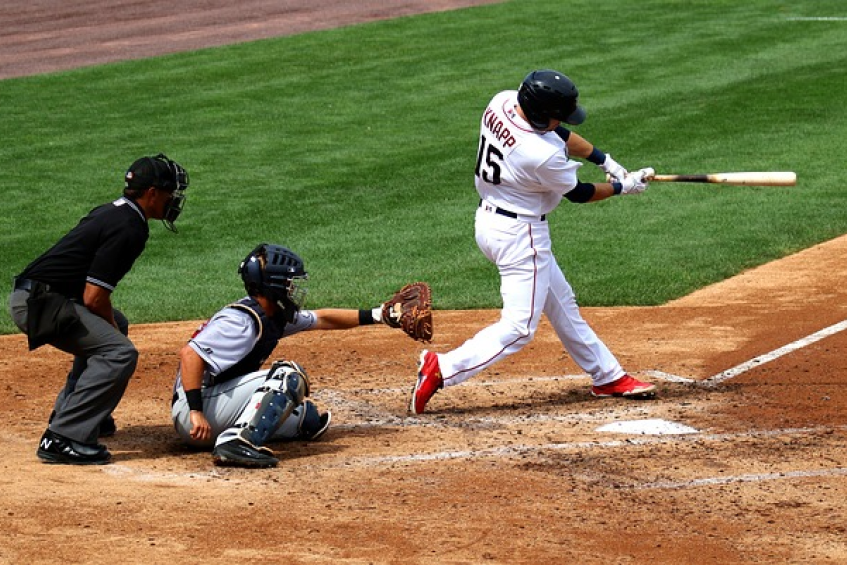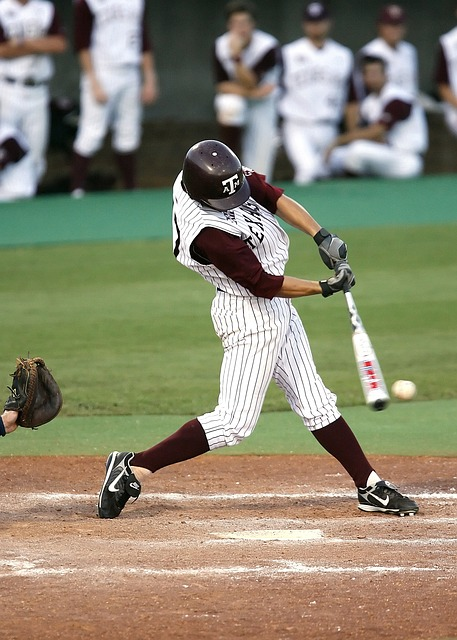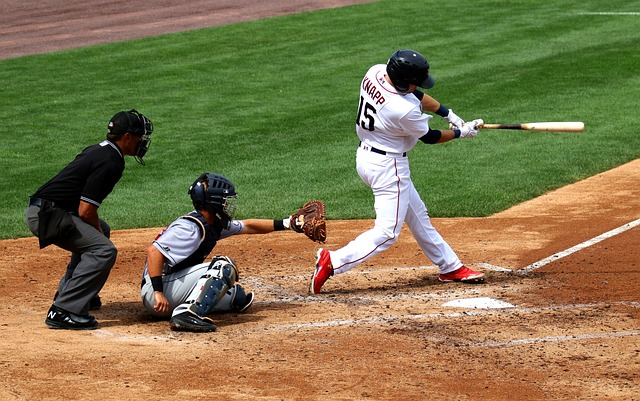
Knowing which team gets to bat first is an important aspect of baseball, as it can greatly impact the flow and outcome of the game. It can influence pitching strategy, outfield positioning, and ultimately, the score. As such, understanding who bats first in most baseball games is crucial for both players and baseball fans, alike.
In this post, we will explore the various rules and factors that determine which team gets to bat first in baseball. We will cover the basic rules of baseball, batting rules, like how the batting order works, and what top and bottom of the inning mean in baseball.
By the end of this post, you will have a comprehensive understanding of the question, "Which Team Bats First in Baseball?" and be equipped to enjoy any baseball game with greater insight.

Baseball is a game played between two teams, each consisting of nine players. The game is divided into nine innings, excluding an extra innings baseball game, with each team getting a chance to bat and field during each inning. The objective of the game is to score more runs than the opposing baseball team.
An inning is a period of play that consists of two halves - the top and the bottom. In the top half, the visiting team takes their turn at bat, while the home team fields. In the bottom half, the home team bats, while the visiting team fields.
The objective of the game is for each team to score as many runs and as many points as possible. A run is scored when a player hits the ball and runs around the bases, touching each one before returning to home plate. If a player hits the ball and it goes out of the playing field, then it is considered a home run, and all runners on base are allowed to score.
In order to score runs, a player must hit the ball, and then run around the bases. The opposing team will try to prevent this by catching the ball or tagging an opposing player with the ball.

The batting order is a crucial aspect of the game as it determines the sequence in which players take their turns at bat. The manager of each team strategically arranges the lineup and leadoff hitters based on the players' skills, strengths, and past performances. The leadoff hitter, who occupies the first position in the lineup, is often a player known for their ability to get on base. They possess a combination of a good batting average, plate discipline, and speed to kickstart the team's offense.
As the batting lineup progresses, the subsequent hitters may have varying skills and roles. The second and third hitters are often consistent contact hitters with the ability to advance baserunners or set the stage for power hitters to drive in runs. The middle of the lineup typically consists of power hitters who possess strong hitting abilities and the potential to hit for extra bases or home runs. These hitters are expected to drive in runs and have a greater chance of clearing the bases.
Towards the end of the lineup, there may be hitters who specialize in specific roles. For example, the eighth or ninth hitter may be a speedy player with excellent bunting skills, aiming to reach base or advance runners by utilizing their speed. The batting order of baseball player is a strategic decision that the manager makes to maximize the team's offensive potential and exploit matchups against the opposing team's pitchers.
Each player on the field, including the pitcher, catcher, infielders, and outfielders, has their designated responsibilities. The pitcher stands on the mound and is responsible for delivering the ball to the batter while trying to deceive them with various pitch types and locations. The catcher is positioned behind the plate and catches the pitches thrown by the pitcher, providing targets and signals to guide the pitcher's selections.
The infielders, consisting of the first baseman, second baseman, shortstop, and third baseman, have specific areas to cover and roles in defending against the opposing team's hits. They are responsible for fielding ground balls, making throws to get the runners out, and executing double plays. The outfielders, positioned in the left field, center field, and right field, are tasked with catching fly balls hit into the outfield and preventing extra base hits.
The terms "top" and "bottom" refer to the two halves of an inning. Each inning consists of two halves, with the visitors batting in the top half and the home team batting in the bottom half. The top of the inning is also referred to as the "top half" or "top frame," while the bottom of the inning is known as the "bottom half" or "bottom frame."
During the top half of an inning, the visiting team's players take their turns at bat. They try to score runs by hitting the ball and advancing around the bases while the defensive team, known as the home team, attempts to prevent them the other team from scoring. After three outs are recorded or the visitors scores their allotted number of runs, the first half-inning ends, and it is followed by the bottom half.
In the bottom half of the inning, the home team's players take their turns at bat. They aim to match or surpass the number of runs scored by the visiting team while the visiting team plays defense. The home team gets the opportunity to bat last in each inning, giving them a potential advantage if they are able to take the lead in the top half of the inning. The game continues with alternating top and bottom halves of innings played until the predetermined number of innings or the game's conclusion is reached.

The visitors bat first. The visiting team is also known as the "away" team or the "road" team. The order of the home teams and the visiting teams' batting is determined by the rules of the game and is a standard practice followed in professional and amateur baseball leagues.
The visiting team gets the opportunity to bat first as a way of baseball rules to ensure fairness and neutrality in the game. This gives both teams an equal chance to score runs and both teams play both offense and defense. The visiting team's lineup takes their turns at bat during the top half of the inning, while the home team plays defense.
The home team, on the other hand, bats last in each inning. This is often seen as an advantage, as the home team has the opportunity to observe the visiting team's performance and potentially adjust their strategy accordingly. The home team's lineup takes their turns at bat during the bottom half of the inning, after the visitors has completed their offensive half.
The team that bats first is the visiting team, also known as the away team or the road team. The visiting team gets the opportunity to bat first during the top half of the first inning, while the home team plays defense. This order of batting is a standard convention in baseball and is followed in professional and amateur leagues.
The rationale behind having the visitors bat first is to ensure fairness and equal opportunity for both teams. By allowing the visiting team to bat first, it eliminates any potential advantage that the home team may have by knowing the score they need to match or surpass the visitor team in the bottom half of the inning.
The home team, on the other hand, bats second during the bottom half of the inning. This gives them the advantage of batting last, which can be beneficial if they are trailing in the game. It allows them the chance to make a comeback or walk-off win by having the final opportunity to score runs.


In conclusion, to the question, Which Team Bats First in Baseball, we know that the visiting team bats first in baseball. This convention in major league baseball is designed to ensure fairness and equal opportunity for both teams. The visitors bats during the top half of the inning, while the home team takes the field and plays defense. The home team then gets their chance to bat in the bottom half of the inning. This order of batting allows for strategic gameplay and provides each team with an equal chance to score runs and determine the outcome of the game.
Understanding the batting order and the significance of the top and bottom of the inning is essential for players, coaches, and fans of baseball. It helps create a balanced and competitive environment, where both teams have the opportunity to showcase their skills and compete on an even playing field. Whether you're at the ballpark or watching the game from home, knowing which team bats first adds to the overall excitement and engagement of the sport.
Chris Sloan is a former baseball league commissioner and travel baseball coach who has made significant contributions to the sport. In 2018, he founded selectbaseballteams.com, a website that helps parents find youth and travel baseball teams in their local areas. Since its launch, the website has experienced impressive growth, offering a wealth of resources including teams, news, tournaments, and organizations. Chris's unwavering passion for baseball and his innovative approach to connecting parents with quality baseball programs have earned him a respected reputation in the baseball community, solidifying his legacy as a leading figure in the world of youth and travel baseball.
There are 0 comments on "Which Team Bats First in Baseball?"
chandler allen says:
"Hi my name is chandler, i’ve enjoyed..."
On Wanting to tryout for summer ball. as an 18 year old
david graham says:
"With no current MLB team in Canada,..."
On With no current MLB team in
Charles Chavez says:
"To All Coaches: Do you have13U or..."
On Looking for Games